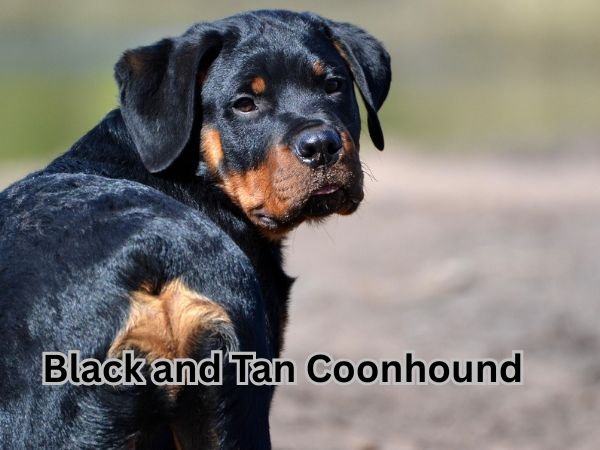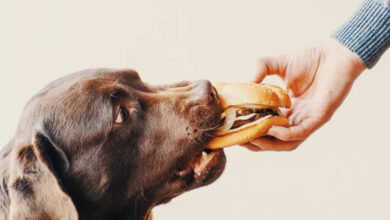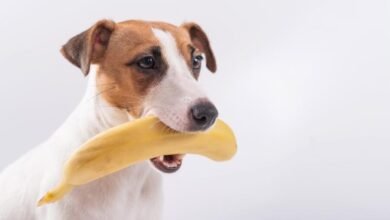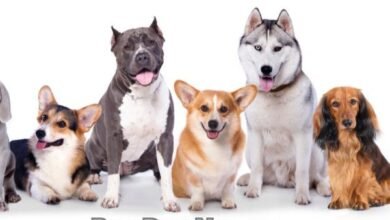
When most people hear the name “Black and Tan Coonhound,” two images often come to mind: first, the striking sight of a sleek, black-and-tan hound with soulful eyes and long, velvety ears; second, the classic American hunting dog, nose to the ground, expertly tracking a scent through the woods. But did you know this scent hound is just as comfortable snoozing on the couch as it is chasing raccoons?
In this article, we’ll uncover fun and surprising facts about the Black and Tan Coonhound-an American original that’s equal parts skilled hunter and devoted family dog. Whether you’re considering adding a coonhound to your home, already share your life with one, or just love learning about unique dog breeds, you’ll find expert insights, practical tips, and heartwarming stories to help you better understand this remarkable breed. Ready to discover what makes the Black and Tan Coonhound so special? Let’s dive in and explore everything you need to know about this lovable, loyal, and endlessly fascinating companion.
Origin Story: An American Classic
Development from Bloodhounds and Foxhounds
- The Black and Tan Coonhound is a quintessential American dog breed, developed in the Southern United States specifically for hunting in the region’s dense forests and rugged terrain.
- Its ancestry traces directly to two prominent European hound breeds:
- Bloodhounds: Renowned for their exceptional scent-tracking abilities, Bloodhounds were originally bred in Europe for tracking game and people. Their keen nose and tenacity made them valuable for developing a new breed suited to American needs.
- Foxhounds: Both English and American Foxhounds contributed to the breed’s lineage. Foxhounds brought speed, endurance, and a strong hunting drive, traits essential for pursuing game across vast American landscapes
- Early American settlers and hunters began crossing Bloodhounds and Foxhounds in the 18th and 19th centuries. The goal was to create a dog that could track elusive prey, particularly raccoons, through forests, swamps, and mountains of the South and Appalachia.
Breed History and Evolution
- The breed’s development paralleled the growth of the United States, with European immigrants bringing their hounds to the New World. Over generations, these dogs adapted to the unique challenges of American hunting.
- By the 19th century, the Black and Tan Coonhound emerged as a distinct breed, recognized for its ability to track and tree raccoons and other game in challenging environments.
- The breed’s deep, melodic bark became a signature trait, allowing hunters to locate their dogs from a distance during nighttime hunts.
- The Black and Tan Coonhound was the first of the coonhound breeds to be officially recognized by the American Kennel Club in 1945, cementing its status as a true American original.
Historical Purpose: Raccoon and Big Game Hunter
Primary Role as a Raccoon Hunter
- The Black and Tan Coonhound was specifically bred to hunt raccoons, a practice that became a staple of rural American life, especially in the South.
- Unlike their European ancestors, which primarily hunted foxes or larger game, these American hounds were trained to track raccoons by scent, follow them through dense woods, and “tree” them-cornering the raccoon in a tree and alerting the hunter with their distinctive bay.
- Their keen sense of smell, persistence, and adaptability made them invaluable for this purpose, as raccoon hunting often took place at night and in difficult terrain.
Versatility as a Big Game Hunter
- While raccoon hunting was their main job, Black and Tan Coonhounds also proved effective at hunting larger game such as bear, wildcat, and even deer, showcasing their versatility and stamina.
- Their ability to track old scents and their determination in the field made them useful for a variety of hunting tasks, contributing to their popularity among American hunters and farmers.
Role in American Culture and Rural Life
- The breed’s development is closely tied to the rural traditions of the American South and Appalachia, where hunting was both a means of sustenance and a cultural pastime
- During the 19th and early 20th centuries, raccoon pelts were a valuable commodity, and the Black and Tan Coonhound’s skills directly contributed to the livelihoods of many rural families.
- Their reputation as reliable, hardworking, and loyal hunting companions helped establish the breed as an enduring symbol of American dog breeding.
Exceptional Scenting Abilities of the Black and Tan Coonhound
The Black and Tan Coonhound is revered among scent hounds for its extraordinary tracking skills, stamina, and adaptability. Developed in the United States from the Bloodhound and Black and Tan Virginia Foxhound, this breed is a specialist in scent work, particularly in tracking game such as raccoons, but also larger animals like deer and bear.
The “Cold Nose” Trait Explained
What Is a “Cold Nose”?
- The term “cold nose” refers to a scent hound’s ability to detect and follow scent trails that are hours or even days old, rather than just fresh ones.
- Black and Tan Coonhounds excel at “cold trailing,” meaning they can pick up and follow faint, aged scent trails that many other dogs would miss.
Why Is the Nose Cold?
- Dogs’ noses are naturally cooler than their body temperature, which increases sensitivity to scent molecules and even weak thermal radiation.
- The wet, cold surface of the nose (rhinarium) helps trap scent particles and enhances the dog’s ability to determine the direction and source of a scent.
Anatomical Advantages
- Long, droopy ears sweep scents from the ground toward the nostrils, amplifying the dog’s ability to pick up and retain scent trails.
- Loose skin and dewlaps around the face and neck trap scent particles, allowing for repeated analysis as the dog works a trail.
What Makes the Black and Tan Coonhound a Top Scent Hound
Key Scenting Skills
- Exceptional Olfactory Power: Inherited from the Bloodhound, Black and Tan Coonhounds possess a highly developed sense of smell, with millions of scent receptors that allow them to distinguish and follow individual scents over long distances and challenging terrain.
- Endurance and Focus: These dogs are bred for stamina and can work for hours or overnight, ignoring distractions while on a trail.
- Adaptability: Capable of tracking in various weather conditions and terrains, from dense forests to mountainous regions.
- Persistence: Once on a scent, their determination and single-mindedness are legendary among hunters and handlers.
Behavioral Traits
- Highly focused when tracking, often ignoring commands or distractions until the trail is resolved.
- Sociable, gentle, and calm at home, making them excellent companions as well as working dogs.
Comparison to Other Scent Hounds
How the Black and Tan Coonhound Stacks Up
- Bloodhound: Universally recognized as the “gold standard” in scent detection, Bloodhounds have the most scent receptors (around 300 million) and are capable of following trails several days old for over 100 miles. Black and Tan Coonhounds, while slightly less sensitive, are still among the elite and are particularly valued for their cold-nosed tracking and versatility in hunting nocturnal prey like raccoons.
- Basset Hound: Known for their low stature and long ears, Basset Hounds are second only to Bloodhounds in scenting ability. They excel at ground scenting but are less agile and have less endurance than Coonhounds.
- Beagle: Beagles are outstanding scent hounds with a keen nose and a happy demeanor, but they generally track freshener scents (“hot nose”) and are used more for small game.
- Other Coonhounds: The Black and Tan is one of several Coonhound breeds (including Bluetick, Redbone, and Treeing Walker). While all are skilled scent hounds, the Black and Tan is especially prized for its cold-nosed abilities and adaptability to difficult terrain and varied game.
Why Scent Hounds Excel at Tracking
Unique Features of Scent Hounds
- Olfactory Superiority: Scent hounds, including the Black and Tan Coonhound, have 40 times more brain space devoted to analyzing odors than humans and up to 300 million olfactory receptors.
- Physical Adaptations: Long ears, loose skin, and a large nasal cavity help collect and retain scent particles, making these breeds highly efficient at tracking.
- Mental Traits: Independence and focus are hallmarks of scent hounds, allowing them to work methodically and persistently even when separated from their handlers.
The Black and Tan Coonhound is a top-tier scent hound, renowned for its “cold nose” trait, stamina, and determination. While the Bloodhound may have the absolute edge in scent detection, the Black and Tan Coonhound’s unique combination of olfactory power, endurance, and adaptability make it one of the most respected and versatile tracking dogs in the world. Its ability to follow aged scent trails over challenging terrain cements its status as a premier scent hound and tracking dog
Distinctive Appearance
Coal-Black Coat and Tan Markings
- The Black and Tan Coonhound is instantly recognizable for its striking, coal-black coat paired with rich tan markings.
- The tan markings are precisely placed: above the eyes, on the sides of the muzzle, chest, legs, and breeching. Black “pencil” marks often appear on the toes, adding to the breed’s unique look.
- The coat is short, dense, and glossy, providing both elegance and protection against rough terrain encountered during hunts.
- Any white on the chest larger than one inch is considered undesirable for the breed standard.
Signature Long Ears and Physical Features
- One of the breed’s most distinctive features is its long, wide, and thin ears, set low and far back on the head, hanging well past the muzzle-sometimes even reaching beyond the tip of the nose.
- The head is long and well-proportioned, with an oval outline and a long muzzle. Eyes are hazel to dark brown, giving a soft, attentive expression
- The body is well-muscled and slightly longer than tall, creating a rectangular silhouette. The chest is deep, supporting the breed’s stamina and endurance.
- The tail is thick at the base, tapering to a point, and is set slightly below the backline. It is carried high when the dog is alert or moving, and hangs freely at rest.
Size and Weight
- Black and Tan Coonhounds are large hounds:
- Males: 25–27 inches tall at the shoulder, weighing 65–110 pounds.
- Females: 23–25 inches tall, weighing 60–110 pounds (some sources note 40–65 pounds as a lower range)
- Their overall impression is one of power, agility, and alertness, with strong, straight legs and a robust, athletic build
Temperament: The Gentle Hunter
Friendly, Outgoing, and Even-Tempered
- Black and Tan Coonhounds are renowned for their friendly, outgoing, and even-tempered nature.
- They are sociable and enjoy the company of people and other dogs, making them excellent companions for both active individuals and families
- While generally outgoing, some individuals may be reserved with strangers, but they are never shy or aggressive
Suitability for Families and Children
- The breed is known for its gentle and patient demeanor, especially with children, making it a fantastic family dog.
- Black and Tan Coonhounds are tolerant and affectionate, displaying loyalty and a willingness to bond closely with family members.
- They typically get along well with other dogs and can coexist with other pets, though their hunting instincts may make them less suitable for homes with small animals like rodents or birds.
Companion Dog Qualities
- These dogs are not just hunters-they thrive as companion dogs, providing affection, loyalty, and joy to their families.
- They are calm and mellow indoors but retain their keen hunting instincts and energy outdoors, requiring regular exercise and mental stimulation.
- The breed may be prone to separation anxiety if left alone for extended periods, so they do best in homes where someone is present most of the day.
Temperament Summary
- Gentle, loyal, and affectionate
- Friendly and sociable, but sometimes reserved with strangers
- Excellent with children and suitable for families
- Generally good with other dogs and pets (with caution around small animals)
- Even-tempered and adaptable to both active and relaxed lifestyles.
The Black and Tan Coonhound’s distinctive appearance-coal-black coat, tan markings, and long ears-combined with its gentle, friendly temperament, makes it a beloved large hound for families and hunters alike. Their adaptability, loyalty, and even disposition ensure they are not only effective working dogs but also cherished companions in the home.
Living With a Black and Tan Coonhound
Energy Levels, Exercise Needs, and Indoor Calmness
- Black and Tan Coonhounds are active dogs with high energy levels, bred for endurance and long hours of work outdoors.
- They require at least 40–60 minutes of vigorous exercise daily, such as long walks, hikes, or play in a secure, fenced area.
- Their strong scent drive means they should always be leashed or in a fenced space; once on a scent, recall can be challenging.
- Despite their outdoor stamina, Black and Tan Coonhounds are surprisingly calm and laid-back indoors. They enjoy lounging with the family and are content to relax after their exercise needs are met.
- Without sufficient physical activity, they may become bored or destructive, so regular exercise is crucial for their well-being.
Adaptability to Family Life and Mental Stimulation Needs
- Black and Tan Coonhounds are sociable, affectionate, and loyal, making them well-suited for family life.
- They generally get along well with children and other pets, displaying a gentle and patient temperament.
- Their intelligence and independence can lead to stubbornness, so early socialization and consistent, positive reinforcement training are important
- Mental stimulation is essential for this breed. Activities like scent games, puzzle toys, obedience training, and agility exercises help keep their minds engaged and prevent boredom
- They thrive on companionship and do not do well when left alone for long periods, as loneliness can lead to undesirable behaviors
Vocal Nature and Communication
Tendency to Howl and Bark
- Black and Tan Coonhounds are known for their loud, mournful “serenades”-a deep, baying howl used to communicate, especially when they are lonely or have found something interesting
- Their vocalizations are a natural part of their hunting heritage and can be quite loud, carrying over long distances
- Each dog’s howl is unique, and they may bark or bay to alert their family or express excitement
Impact on Neighborhood Living
- This breed’s vocal tendencies can be a challenge in urban or apartment settings, where neighbors may not appreciate frequent howling or barking.
- While some owners find the “music” endearing, it’s important to train commands like “quiet” to help manage excessive noise, especially if you live in close quarters.
- Black and Tan Coonhounds are not ideal for apartment living unless their exercise and mental needs are consistently met and their vocal tendencies are managed.
Grooming and Care
Coat Maintenance and Grooming Needs
- Black and Tan Coonhounds have a short, dense coat that is relatively low maintenance.
- Weekly brushing with a hound glove or rubber grooming mitt helps control shedding and keeps the coat healthy.
- They shed moderately year-round, with some seasonal increases, so regular brushing will help minimize hair around the home.
- Occasional baths (about once a month) are recommended, especially to manage the breed’s natural “hound odor”.
- They are known to drool, so wiping their face after meals is a good habit.
Ear Care and Dental Hygiene
- The breed’s long, floppy ears are prone to trapping moisture and debris, making regular ear cleaning and inspection essential to prevent infections.
- Check ears weekly for redness, odor, or discharge, and clean with a veterinarian-recommended solution as needed.
- Regular dental care is important; brush their teeth at least twice a week with canine toothpaste to maintain good oral health.
- Nails should be trimmed regularly to prevent discomfort, especially given their active lifestyle.
The Black and Tan Coonhound is an energetic, intelligent, and affectionate breed that thrives on both vigorous exercise and family companionship. While they are calm and relaxed indoors, they need plenty of physical and mental stimulation to stay happy. Their vocal nature and unique howling can be a challenge in some living situations, but with early training and proper care-including attention to their ears and coat-they make loyal, loving, and adaptable family members.
Health and Longevity
Common Health Concerns
Coonhounds, like many large and active breeds, are prone to several health issues that owners should be aware of:
- Bloat (Gastric Dilatation-Volvulus): This is a life-threatening condition where the stomach fills with gas and can twist, cutting off blood supply. It requires immediate veterinary attention. Preventive tips include feeding smaller, more frequent meals and avoiding vigorous exercise right after eating.
- Hip Dysplasia: A genetic condition where the hip joint doesn’t develop properly, leading to arthritis and mobility issues as the dog ages. Regular exercise, maintaining a healthy weight, and joint supplements can help manage symptoms.
- Cataracts and Eye Issues: Some coonhound breeds may be prone to cataracts, which can impair vision and may require surgical intervention if they progress.
- Other Concerns: Ear infections (due to their long, floppy ears), skin allergies, and obesity can also affect coonhounds if not properly managed.
Average Lifespan
- Coonhounds, being medium to large-sized dogs, typically have an average lifespan of 10 to 12 years. With attentive care, some may live longer.
Tips for Keeping Them Healthy
- Regular Vet Visits: Annual wellness checks help catch health issues early and keep vaccinations up to date.
- Monthly Preventatives: Use heartworm, flea, and tick preventatives as recommended by your vet.
- Exercise: Daily physical activity is essential to keep coonhounds fit and mentally stimulated.
- Balanced Diet: Feed a high-quality, breed-appropriate diet and monitor calorie intake to prevent obesity.
- Dental Care: Brush teeth regularly to prevent gum disease and other oral health issues.
- Ear Care: Clean their ears routinely to prevent infections, especially in breeds with long, floppy ears.
- Socialization: Regular, positive exposure to new people, animals, and environments helps maintain their mental health.
- Identification: Microchip and use ID tags for safety in case they wander off.
Training Tips for Stubborn Streaks
Intelligence, Willfulness, and Socialization Needs
Coonhounds are intelligent and independent, traits honed by generations of hunting and tracking. This intelligence can sometimes be mistaken for stubbornness, as they may choose to follow their nose rather than commands. Early socialization and consistent leadership are critical for shaping a well-mannered companion.
Training Advice for New Owners
- Start Early: Socialize puppies from a young age (ideally before 8 weeks) to a variety of people, animals, sounds, and environments to prevent fearfulness later in life.
- Be Consistent: Use the same commands and reward system. Inconsistent cues can confuse dogs and reinforce unwanted behaviors.
- Positive Reinforcement: Reward desired behaviors with treats, praise, or play. Avoid punishment, as it can increase anxiety and undermine trust.
- Establish Leadership: Set clear expectations and boundaries. Be calm, confident, and fair, using rewards to reinforce good behavior.
- Practice Basic Commands Regularly: Repetition helps reinforce learning, especially with headstrong breeds.
- Patience and Persistence: Training stubborn dogs requires extra patience. Stay calm and persistent, and celebrate small successes.
- Avoid Bribery: Don’t give treats without the dog performing the desired behavior. Make them earn rewards through obedience.
- Follow Through: Always ensure your dog completes a command before moving on.
- Ongoing Socialization: Continue exposing your dog to new experiences throughout life to maintain good behavior.
Unique Facts and Fun Trivia
Quirky and Surprising Facts
- Drooling: Many coonhounds, especially those with loose lips and jowls, are known for their drooling. Owners often keep a “drool rag” handy for clean-ups.
- High Prey Drive: Coonhounds have an exceptionally strong prey drive, a trait bred for tracking and treeing game. They may be prone to chasing small animals and require secure fencing and supervision during outdoor activities.
- AKC Recognition: The Black and Tan Coonhound was the first coonhound breed recognized by the American Kennel Club (AKC) in 1945. The American English Coonhound holds the record for the fastest advancement to full AKC recognition, taking just 545 days.
- Six Distinct Breeds: There are six main coonhound breeds-Black and Tan, American English, Bluetick, Redbone, Treeing Walker, and Plott Hound. All but the Plott Hound descend from the English Coonhound.
- Coon Dog Day: Coonhounds have their own festival, “Coon Dog Day,” celebrated annually with parades, races, and dog shows.
- Coonhound Events: These dogs are stars in hunting and dog sports, excelling in tracking, treeing, and scent work competitions. The Treeing Walker Coonhound is the most popular breed for coon hunting events.
- Unique Memorial: The Key Underwood Coon Dog Memorial Graveyard in Alabama is reserved exclusively for coonhounds, highlighting the breed’s cultural significance.
Coonhounds are fascinating, loyal, and energetic companions with unique health considerations, a need for structured training, and a rich history in American hunting and dog sports. With proper care, training, and appreciation for their quirks, they make wonderful family members and working partners.
Is the Black and Tan Coonhound Right for You?
Consider this breed if you:
- Enjoy outdoor activities and can provide plenty of exercise and mental stimulation.
- Have a secure yard or are committed to leashed walks, as their strong prey drive can lead them to wander.
- Seek a loyal, affectionate companion who is good with children and enjoys being part of the family.
- Are prepared for some vocalization and the need for regular ear and dental care.
- Can offer consistent training and socialization to manage their independence and occasional stubbornness.
If you’re looking for a devoted, adventurous, and affectionate dog with a storied hunting background and an easygoing home demeanor, the Black and Tan Coonhound may be the perfect addition to your family.
FAQ
Are Black and Tan Coonhounds good with kids?
Yes, Black and Tan Coonhounds are gentle and friendly with kids. They enjoy being part of the family and love to play. Just make sure to supervise playtime, as they can be big and playful.
How much exercise does a Black and Tan Coonhound need?
They need at least one to two hours of exercise every day. Long walks, playtime, or hikes keep them happy. These dogs have lots of energy and love to follow scents outdoors.
Do Black and Tan Coonhounds make good family pets?
Yes, they are loyal, loving, and enjoy being around people. Black and Tan Coonhounds do best in active homes where they get enough attention and exercise. They are great with families and other dogs.
What are common health problems in Black and Tan Coonhounds?
They can have ear infections, hip dysplasia, and eye problems. Regular vet visits and ear cleaning help keep them healthy. Always watch for signs like limping or frequent ear scratching.
How do you train a Black and Tan Coonhound?
Use simple commands, treats, and praise. Be patient and consistent. Since they follow scents easily, keep them focused during training. Start early and keep sessions short and fun.



